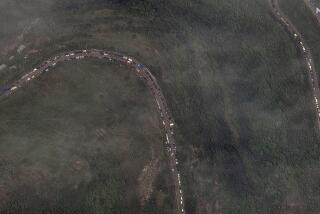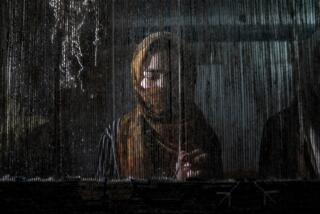A NATION IS DYING Afghanistan Under the...
- Share via
A NATION IS DYING Afghanistan Under the Soviets by Jeri Laber and Barnett Rubin (Northwestern University Press, 625 Colfax St., Evanston, Ill. 60201: $14.95 , paper)
While the Soviet military presence is fading from Afghanistan, more subtle instruments of domination remain: The suppression of civil liberties, prohibitions against private business, perks for those who join the Communist Party and penalties for Muslims (99% of the population) who pray in the public schools. Most troubling, however, is the fate that awaits many Afghans who can’t be managed this way: arbitrary arrest, torture, imprisonment and execution. No one in the West has been able to pinpoint the number of Afghans killed by the Soviet-supported PDPA government. The estimate believed to be most accurate comes from a French demographer, who calculates that from 6.5-11.5% of the nation’s population of 15 million has been killed, mostly because of aerial bombardment by the Afghan government.
“A Nation Is Dying,” based on several hundred chilling testimonials from Afghan refugees, does little to confirm this figure or describe the dynamics of Afghan politics. It can be argued that the authors are merely fanning the fires of war by recounting the refugees’ stories of torture without reporting on moujahedeen violence or appraising political motives in the region. But if the objective is to provoke public outcry in the West, it is likely that these personal stories of truly brutal injustice will have more of an immediate emotional impact on Americans than a dry historical chronicle.
Recent Afghan history probably has attracted little attention in the West because it is so muddled: definitive lines have not always divided capitalist, Communist, Muslim and monarchist powers. The moujahedeen resistance, for one, is an unlikely American ally. Divided between Muslims eager to accept Western weapons and extreme fundamentalists (like Iran’s ayatollahs) who are hostile to the United States, the moujahedeen (“holy warriors”) hold fewer Western goals than the country’s ruling “Parchami” party. Like the government it replaced--the kingdom of Zaber Shah, who ruled (in name, at least) from 1933-73--the mostly Western-educated Parchamis want to modernize the country’s technological and agricultural base.
Despite the title of this book, auguries are good for Afghanistan this year. While the nation’s people are still paying for their leaders’ war with food shortages and other hardships, a coalition has formed in recent months to pressure the Parchamis to share power with King Zaber Shah and the moujahedeen . This time, the coalition’s supporters--the Soviet Union, the United States, Pakistan and possibly the moujahedeen ‘s more moderate factions--are too numerous and powerful to ignore.
More to Read
Sign up for Essential California
The most important California stories and recommendations in your inbox every morning.
You may occasionally receive promotional content from the Los Angeles Times.













